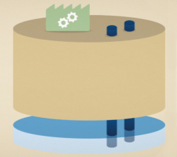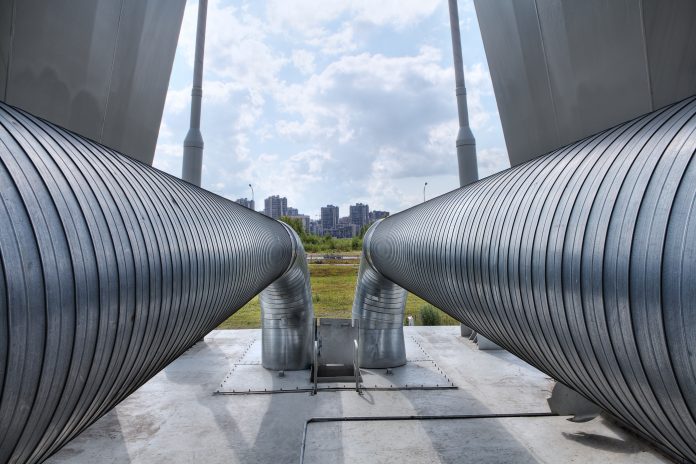Here, Grundfos Holding A/S tell us how district heating can effectively contribute to the green energy transition through sector coupling
It’s a fact that district heating is extremely well-positioned to contribute to – and advance – the green transition. The district heating sector can, by using today’s well-known technologies quite easily be transformed into a green energy sector, not using fossil fuels. It is just a matter of political will and financial ability. The district heating sector is a very flexible energy-consuming sector because heat energy acts as a common denominator for all other forms of energy that can be converted into heat. This makes the district heating sector the ideal partner for sector coupling, to utilize large amounts of surplus energy from other sectors. At the same time it’s also a very big advantage for the district heating sector, that the sector is able to seasonally store huge amounts of energy from summer to winter. This is not possible in for example the power sector, but it is a necessity to balance production and demand.
The concept of sectoral coupling
The aim of the concept ‘sector coupling’ is to utilize green energy in an optimum way across all sectors, avoiding wasting valuable resources and green energy due to inefficient processes and rigid thinking. What is considered waste in one sector can often be a valuable resource in another sector, so we must learn to take advantage of the opportunities that exist to use green energy more efficiently than we do today. By doing this, green energy not only becomes attractive because we must necessarily have reduced the total CO2 emission, it also becomes economically attractive and competitive compared to many other forms of energy, because it becomes easily accessible. But it is a prerequisite that all sectors choose to cooperate and support energy efficiency where it is possible and among other things are aware of the fact that unused energy remains the greenest energy we have. If there is to be enough green energy for all, it is imperative that we streamline the energy sector, utilize digital solutions and develop new algorithms and programs that can use IT and communication platforms across sectors. In addition, there is also a great need to improve energy storage technologies and to develop cross-cutting business models between the different sectors.
Green energy and energy-efficient production forms
For many people, the concept of green energy has largely been synonymous with green power from wind turbines and solar cells but we cannot base the green transition on power as the only energy supplier in the future.
The view of green energy will be much more nuanced because we have become aware that green energy is found everywhere and new types of highly energy-efficient plants like co-production of cooling and heat are possible to utilize, but the technology is not yet used on a large scale, because the need for heat production for district heating has not matched the need for production of cooling. But the phase shift of time between cooling needs and heating needs, can be remedied with e.g. large ATES energy stores, where surplus heat from summer cooling production is stored as lukewarm energy in the subsoil until the heating season starts and the energy will be recovered from the subsoil for district heating via a heat pump. ATES storage systems are today made in GWh sizes where the subsoil is suitable for it.
Utilization of local energy sources in the district heating sector
The district heating sector must learn to use all available local sources of green energy, some can be utilized directly in the district heating network, others need help from a heat pump system, but such solutions require investments and new business models. The solution will be attractive for new market players who can see the opportunities in offering heat sales to the district heating companies based on the utilization of local energy sources. The new market players will find potential local energy sources, develop these and put them to use on market terms with customized investments. That way, they remove the risk of failure from the district heating companies, which often are without the necessary resources or know-how to handle the task themselves.
What will happen in the district heating sector in connection with the green transition
It is certain that the district heating sector will grow organically over the coming years as a result of the sector coupling and the great flexibility to utilize available energy sources. The district heating sector can efficiently supply an array of buildings with green energy at competitive prices, especially in cities and other densely populated areas. The district heating sector will be a competitive supplier of stable green energy to the industrial sector too, and it will be more common that green district heating will be utilized in light processes. The reason for this is that the demand for green power will grow dramatically and the power sector cannot keep up with and expand production facilities, transmission lines and distribution networks in line with demand, that leads to the prices for green power will rise dramatically when everyone wants to use it.
Sector coupling and district heating
Sector coupling is one of the necessary paths to go to achieve a fossil-free society. Sector coupling must be high on the agenda in the coming years if we want to succeed with this. Sector coupling must be part of our priorities every time new construction projects are made and new infrastructure projects are established. This also means that the district heating industry must work continuously to develop new products and solutions to support the district heating sector’s need for solutions to implement the green transition.
Green transition and district heating customers
The green transition in the district heating sector also requires district heating customers to actively support their utilities, among other things by demanding that their heating must be green, even if it is not the cheapest option in the short term. It will be it in the long run, because if we do not accelerate the green transition significantly, we will find that the cost of protecting ourselves from climate change quickly exceeds the cost of green conversion multiple times over.
Please note: This is a commercial profile












